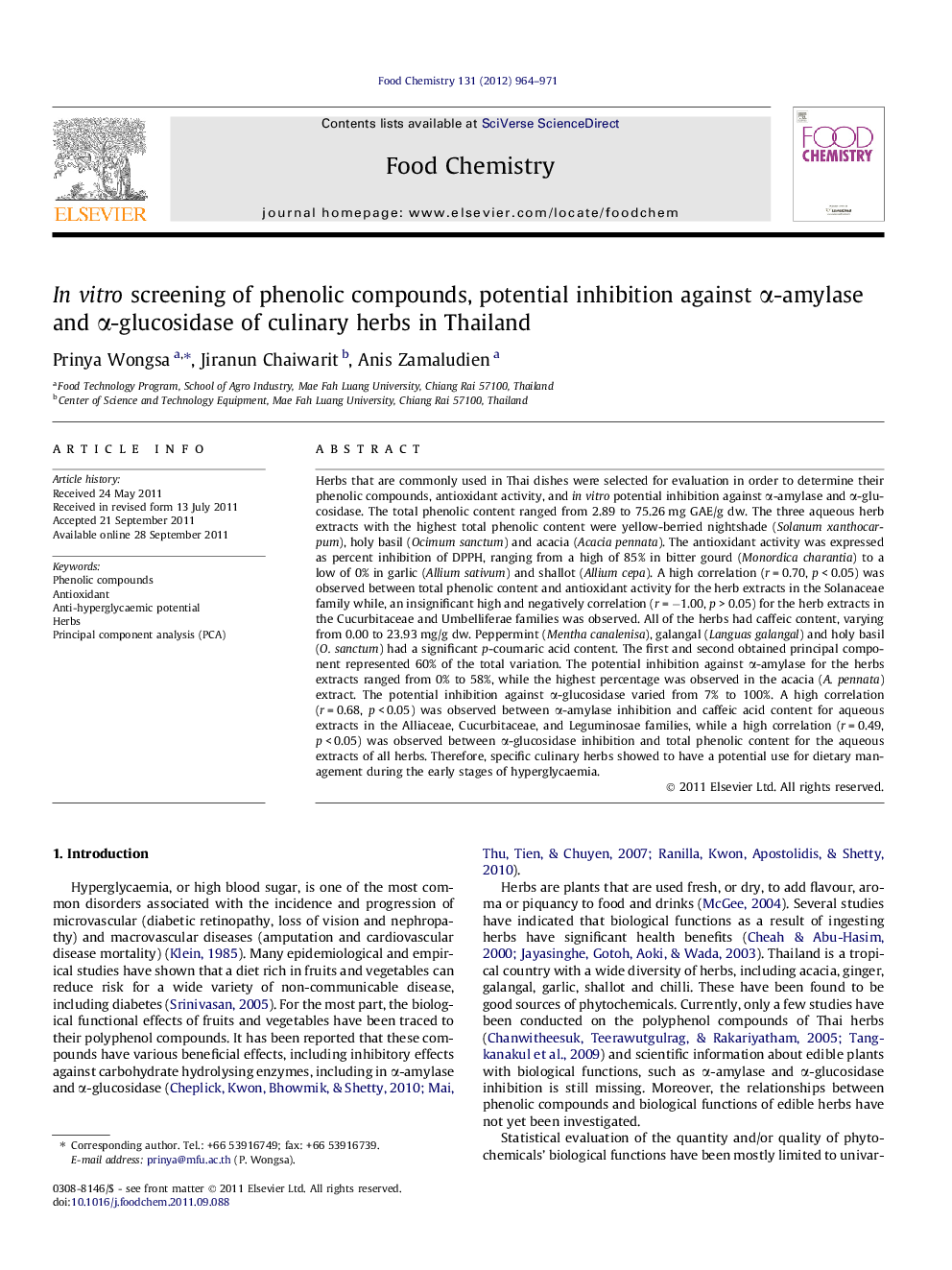| کد مقاله | کد نشریه | سال انتشار | مقاله انگلیسی | نسخه تمام متن |
|---|---|---|---|---|
| 1188133 | 963481 | 2012 | 8 صفحه PDF | دانلود رایگان |

Herbs that are commonly used in Thai dishes were selected for evaluation in order to determine their phenolic compounds, antioxidant activity, and in vitro potential inhibition against α-amylase and α-glucosidase. The total phenolic content ranged from 2.89 to 75.26 mg GAE/g dw. The three aqueous herb extracts with the highest total phenolic content were yellow-berried nightshade (Solanum xanthocarpum), holy basil (Ocimum sanctum) and acacia (Acacia pennata). The antioxidant activity was expressed as percent inhibition of DPPH, ranging from a high of 85% in bitter gourd (Monordica charantia) to a low of 0% in garlic (Allium sativum) and shallot (Allium cepa). A high correlation (r = 0.70, p < 0.05) was observed between total phenolic content and antioxidant activity for the herb extracts in the Solanaceae family while, an insignificant high and negatively correlation (r = −1.00, p > 0.05) for the herb extracts in the Cucurbitaceae and Umbelliferae families was observed. All of the herbs had caffeic content, varying from 0.00 to 23.93 mg/g dw. Peppermint (Mentha canalenisa), galangal (Languas galangal) and holy basil (O. sanctum) had a significant p-coumaric acid content. The first and second obtained principal component represented 60% of the total variation. The potential inhibition against α-amylase for the herbs extracts ranged from 0% to 58%, while the highest percentage was observed in the acacia (A. pennata) extract. The potential inhibition against α-glucosidase varied from 7% to 100%. A high correlation (r = 0.68, p < 0.05) was observed between α-amylase inhibition and caffeic acid content for aqueous extracts in the Alliaceae, Cucurbitaceae, and Leguminosae families, while a high correlation (r = 0.49, p < 0.05) was observed between α-glucosidase inhibition and total phenolic content for the aqueous extracts of all herbs. Therefore, specific culinary herbs showed to have a potential use for dietary management during the early stages of hyperglycaemia.
► Inhibition against α-amylase for the herbs extracts ranged from 0% to 58%.
► Inhibition against α-glucosidase for the herbs extracts varied from 7% to 100%.
► Phenolic content and inhibition against α-amylase was insignificant correlated.
► Caffeic acid content and inhibition against α-amylase was strongly correlated.
► Specific herbs showed to have a potential use for hyperglycaemia management.
Journal: Food Chemistry - Volume 131, Issue 3, 1 April 2012, Pages 964–971